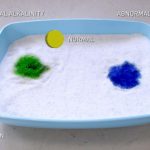What Is Ductless Mini Split?
An air-conditioning system referred to as a ductless mini-split employs 1 or maybe more walls-attached air flow handlers as well as an exterior compressor to great as well as heat your property in different, largely individual-area zones.
How can they function?
You might manage the heat in particular spaces or spots with the aid of tiny-split air conditioning units, which are air conditioning and heating solutions.
You must initial be aware that Air-Con mini split systems primarily comprise of two pieces to realize the way they functionality. Usually, they already have an inside of oxygen-managing device or units as well as an outdoor compressor condenser evaporator.
Take into account the family fridge to explain further more exactly how the small air con features. Your family fridge ingredients heating in the within and disperses it to your home’s home. Because of this, in this process, you won’t sense any warmth in your fridge. The refrigerator blows heat over atop or through the back despite showing frosty inside.
The a number of air cooling system operates in the same manner. It keeps the cool air in when removing the ambiance from your particular area and sending it outside the house. The numerous air conditioning unit performs similarly. It keeps the awesome oxygen within while taking off the heat from the specific spot and mailing it outside the house.
A ductless mini-split system’s benefits
Excellent SEER Rating:
The SEER score measures an aura conditioner’s greatest air conditioning performance. In comparison to complete-property AC systems, which normally have SEER reviews of 22 to 23, ductless mini may have Ashrae scores as high as 30, that is an exceptionally large number. Better effectiveness means far more substantial cost savings and much less environment impact once your unit runs.
Substantial overall performance:
During times of operation, ductless Heating and air conditioning methods get rid of a lot less atmosphere than traditional kinds. Overall, they can be 20 to 30 percent more efficient than duct-centered techniques.


